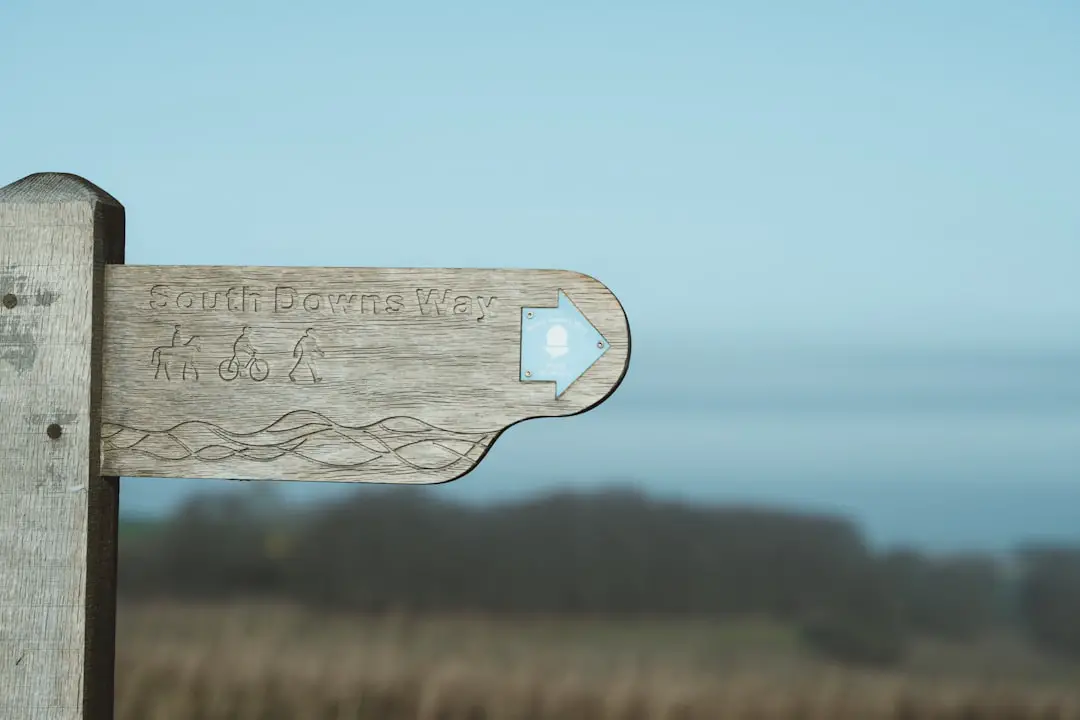
Are you ready to step up your game in the world of fundraising? Walkathons are not just a fun way to get moving; they also serve as powerful tools for community engagement and charitable giving. With distances typically ranging from 5K to 10K, these events can attract participants of all ages and fitness levels. But how do you choose the right distance for your walkathon? 🤔
In this article, we’ll explore everything you need to know about walkathon distances, including tips for planning a successful event, creative ways to incentivize donors, and the impact of these events on community engagement. Did you know that the average walkathon can raise thousands of dollars for charity? Let’s dive into the details and discover how you can make your next walkathon a resounding success!
Key Takeaways
- Average Distances: Most walkathons range from 5K (3.1 miles) to 10K (6.2 miles).
- Planning Essentials: Define your goals, choose a scenic route, and promote effectively.
- Community Impact: Walkathons foster connections and raise awareness for important causes.
- Incentivizing Donations: Use creative strategies like fundraising thermometers and physical swag to encourage contributions.
- Training Tips: Gradually increase your walking distance and maintain consistency for best results.
Ready to gear up for your walkathon? 👉 Shop Walkathon Supplies on:
Let’s get walking! 🏃♀️
Table of Contents
- Quick Tips and Facts
- Background: The Evolution of Walkathons and Their Distances
- What Is a Walkathon? Exploring the Purpose and Benefits
- Quick Answer: The Average Distance of a Walkathon
- How to Plan an Unforgettable Walkathon: Tips and Tricks
- Creative Ways to Incentivize Donors at Walkathon Events
- Walkathon Distances: What You Need to Know
- The Impact of Walkathons on Community Engagement
- Choosing the Right Location for Your Walkathon
- How to Promote Your Walkathon Effectively
- Common Challenges in Organizing a Walkathon and How to Overcome Them
- Conclusion
- Recommended Links
- FAQ
- Reference Links
Quick Tips and Facts
To get started with understanding walkathons, it’s essential to know what they are and how they work. Check out our article on What is a Walkathon? 10 Fun Facts & Benefits You Need to Know! to learn more about the basics of walkathons.
Key Statistics
- The average distance of a walkathon is typically between 5 kilometers (3.1 miles) and 10 kilometers (6.2 miles), as stated on www.walkathonvirtual.com.
- Walkathons can be an effective way to raise funds for charitable causes, with some events raising thousands of dollars.
- Regular walking can have numerous health benefits, including reducing the risk of chronic diseases like heart disease and diabetes, as noted by the World Health Organization.
Benefits of Walkathons
Walkathons offer a range of benefits, including:
- Physical fitness: Walking can help improve cardiovascular health and strengthen muscles.
- Community engagement: Walkathons can bring people together and build relationships.
- Fundraising: Walkathons can be an effective way to raise funds for charitable causes.
- Awareness: Walkathons can help educate the community and drive positive change.
Background: The Evolution of Walkathons and Their Distances

Walkathons have been around for decades, with the first event taking place in the 1960s. Since then, they have evolved to become a popular way to raise funds for charitable causes.
History of Walkathons
The concept of walkathons originated in the 1960s, with the first event being held in the United States. Over the years, walkathons have become increasingly popular, with thousands of events taking place around the world each year.
Impact of Walkathons
Walkathons have had a significant impact on charitable causes, with millions of dollars being raised each year. They have also helped to raise awareness about important issues and have brought communities together.
What Is a Walkathon? Exploring the Purpose and Benefits
A walkathon is a type of fundraising event where participants walk a designated course to raise money for a charitable cause.
Purpose of Walkathons
The primary purpose of a walkathon is to raise funds for a charitable cause. Participants collect pledges for each unit of distance they walk, with the funds being donated to the designated charity.
Benefits for Participants
Participating in a walkathon can have numerous benefits, including:
- Improved physical fitness: Walking can help improve cardiovascular health and strengthen muscles.
- Sense of community: Walkathons can bring people together and build relationships.
- Personal achievement: Completing a walkathon can give participants a sense of accomplishment and pride.
Quick Answer: The Average Distance of a Walkathon
The average distance of a walkathon is typically between 5 kilometers (3.1 miles) and 10 kilometers (6.2 miles), according to www.walkathonvirtual.com.
Factors Affecting Distance
The distance of a walkathon can vary depending on the event and its purpose. Some walkathons may be shorter or longer, depending on the goals of the organizers.
How to Plan an Unforgettable Walkathon: Tips and Tricks
Planning a successful walkathon requires careful consideration of several factors, including the route, registration, and promotion.
Step-by-Step Guide
- Define the purpose and goal: Determine the charitable cause and the amount of money to be raised.
- Choose a date and time: Select a date and time that works best for the target audience.
- Select a route: Choose a safe and scenic route that is suitable for walkers of all ages and abilities.
- Register participants: Create an online registration system and promote the event through social media and local media.
- Promote the event: Use a variety of promotional materials, including posters, flyers, and social media posts.
Creative Ways to Incentivize Donors at Walkathon Events
Incentivizing donors is crucial to the success of a walkathon. Here are some creative ways to encourage donations:
Fundraising Thermometer
Create a fundraising thermometer to visually represent progress towards the goal. This can be a fun and interactive way to track donations and encourage participants to reach the target.
Easy Mobile Donations
Make it easy for donors to give by providing a simple and secure online donation system. This can include QR codes or links to mobile donation pages.
Physical Swag and Prizes
Offer physical swag and prizes to participants who reach certain fundraising milestones. This can include t-shirts, water bottles, and other fun items.
Walkathon Distances: What You Need to Know
Walkathon distances can vary depending on the event and its purpose. Here are some common distances and what you need to know:
Common Distances
- 5K (3.1 miles)
- 10K (6.2 miles)
- Half marathon (13.1 miles)
- Full marathon (26.2 miles)
Factors Affecting Distance
The distance of a walkathon can be affected by several factors, including the age and ability of the participants, the terrain, and the weather.
The Impact of Walkathons on Community Engagement
Walkathons can have a significant impact on community engagement, bringing people together and building relationships.
Building Community
Walkathons can help build a sense of community by providing a shared experience and a common goal.
Raising Awareness
Walkathons can also help raise awareness about important issues and charitable causes.
Choosing the Right Location for Your Walkathon
Choosing the right location for your walkathon is crucial to its success. Here are some factors to consider:
Safety
The location should be safe and free from hazards, with adequate lighting and signage.
Accessibility
The location should be easily accessible, with ample parking and restrooms.
Scenic Route
The location should provide a scenic and enjoyable route for walkers.
How to Promote Your Walkathon Effectively
Promoting your walkathon is crucial to its success. Here are some effective ways to promote your event:
Social Media
Use social media platforms to promote your event and engage with potential participants.
Local Media
Use local media outlets, such as newspapers and radio stations, to promote your event.
Posters and Flyers
Create eye-catching posters and flyers to promote your event and distribute them in public areas.
Common Challenges in Organizing a Walkathon and How to Overcome Them
Organizing a walkathon can be challenging, but with the right strategies, you can overcome common obstacles.
Lack of Volunteers
Recruit volunteers from local schools, community groups, and businesses to help with event planning and execution.
Limited Budget
Seek sponsorships from local businesses and organizations to help cover event costs.
Inclement Weather
Have a backup plan in place, such as a tent or indoor location, in case of bad weather.
Conclusion

In summary, walkathons are not just a fun way to get moving; they also serve as powerful fundraising events that foster community engagement and awareness for various causes. With average distances typically ranging from 5K (3.1 miles) to 10K (6.2 miles), they cater to a wide range of participants, from seasoned walkers to beginners.
Positives:
- Health Benefits: Walking promotes cardiovascular health and overall fitness.
- Community Building: They foster connections among participants and raise awareness for important causes.
- Fundraising Potential: They can generate significant funds for charities.
Negatives:
- Logistical Challenges: Organizing a walkathon can be complex, requiring careful planning and volunteer coordination.
- Weather Dependence: Outdoor events may be affected by inclement weather, necessitating backup plans.
Overall, we confidently recommend participating in or organizing a walkathon. Not only do you contribute to a worthy cause, but you also enhance your physical fitness and connect with your community. So lace up those walking shoes and get ready to make a difference! 🌟
Recommended Links
-
👉 Shop Walkathon Supplies on:
-
Books on Fundraising and Community Engagement:
FAQ
What is a typical walkathon distance?
A typical walkathon distance ranges from 5 kilometers (3.1 miles) to 10 kilometers (6.2 miles). Some events may offer longer distances, such as half marathons or full marathons, depending on the participants’ abilities and the event’s goals.
Read more about “What Are the Distances for a Walkathon? Discover 7 Essential Insights! 🚶♀️”
How long does it take to complete a walkathon?
The time it takes to complete a walkathon varies based on the distance and the individual’s walking speed. On average, participants can expect to finish a 5K in about 45 minutes to 1 hour, while a 10K may take 1.5 to 2 hours.
Read more about “How Do Walkathons Make Money? 10 Proven Strategies Revealed! 💰”
How do I train for a walkathon?
Training for a walkathon involves gradually increasing your walking distance and pace. Here’s a simple plan:
- Start Slow: Begin with short distances (1-2 miles) and gradually increase.
- Consistency: Aim for at least 3-4 walking sessions per week.
- Cross-Training: Incorporate strength training and flexibility exercises to enhance overall fitness.
- Practice Walks: Schedule longer walks on weekends to simulate the event distance.
Read more about “What is a Walkathon? 10 Fun Facts & Benefits You Need to Know! 🚶♀️”
What is a good distance for a beginner’s walkathon?
For beginners, a 5K (3.1 miles) is a great starting point. It’s manageable for most fitness levels and allows participants to enjoy the experience without feeling overwhelmed.
How far should children walk in a walkathon?
Children can typically participate in shorter distances, such as 1 mile or 2 kilometers. It’s essential to consider their age and fitness level, ensuring they have a fun and safe experience.
Read more about “Discover 10 Incredible Advantages of Participating in Charity Walkathons! 🚶♀️💖”
How is the distance of a walkathon measured?
The distance of a walkathon is usually measured using a combination of GPS technology, mile markers along the route, and pre-measured courses. Event organizers often provide maps and distance markers to help participants track their progress.
What are the benefits of participating in a walkathon, besides fundraising?
Participating in a walkathon offers numerous benefits, including:
- Physical fitness: Walking improves cardiovascular health and strengthens muscles.
- Mental well-being: Engaging in physical activity can reduce stress and improve mood.
- Community connection: Walkathons foster relationships and promote a sense of belonging.
Are there different distances offered at most walkathons?
Yes, many walkathons offer multiple distances to accommodate participants of varying fitness levels. Common options include 5K, 10K, and sometimes longer distances like half marathons or full marathons.
